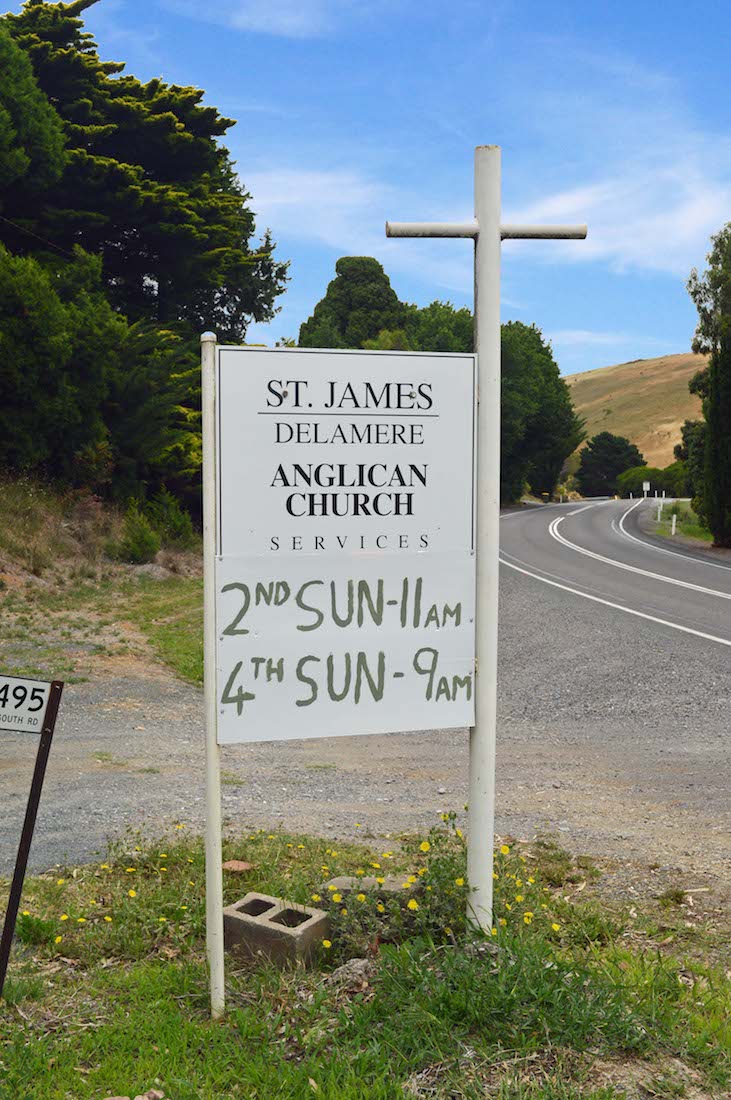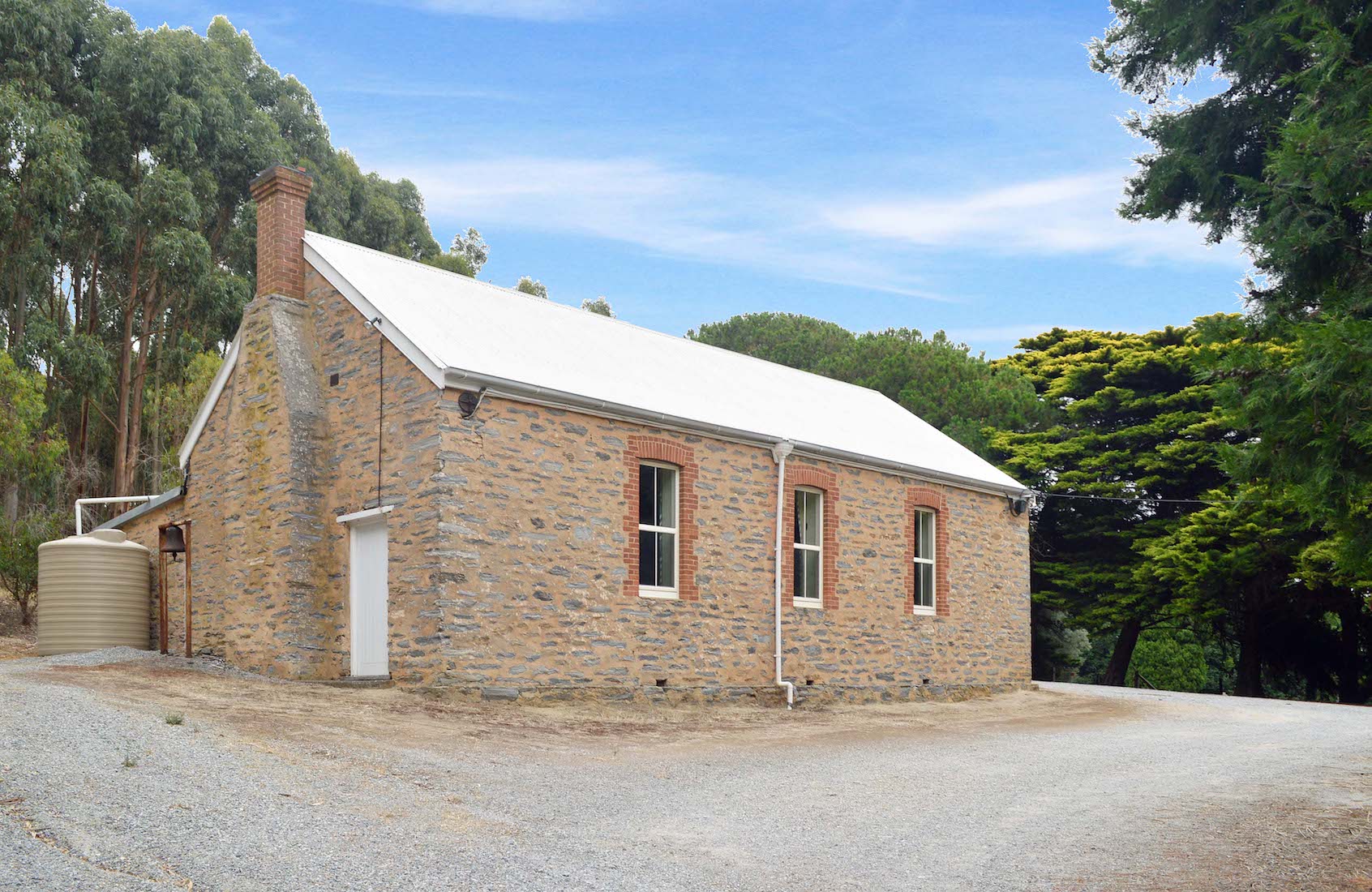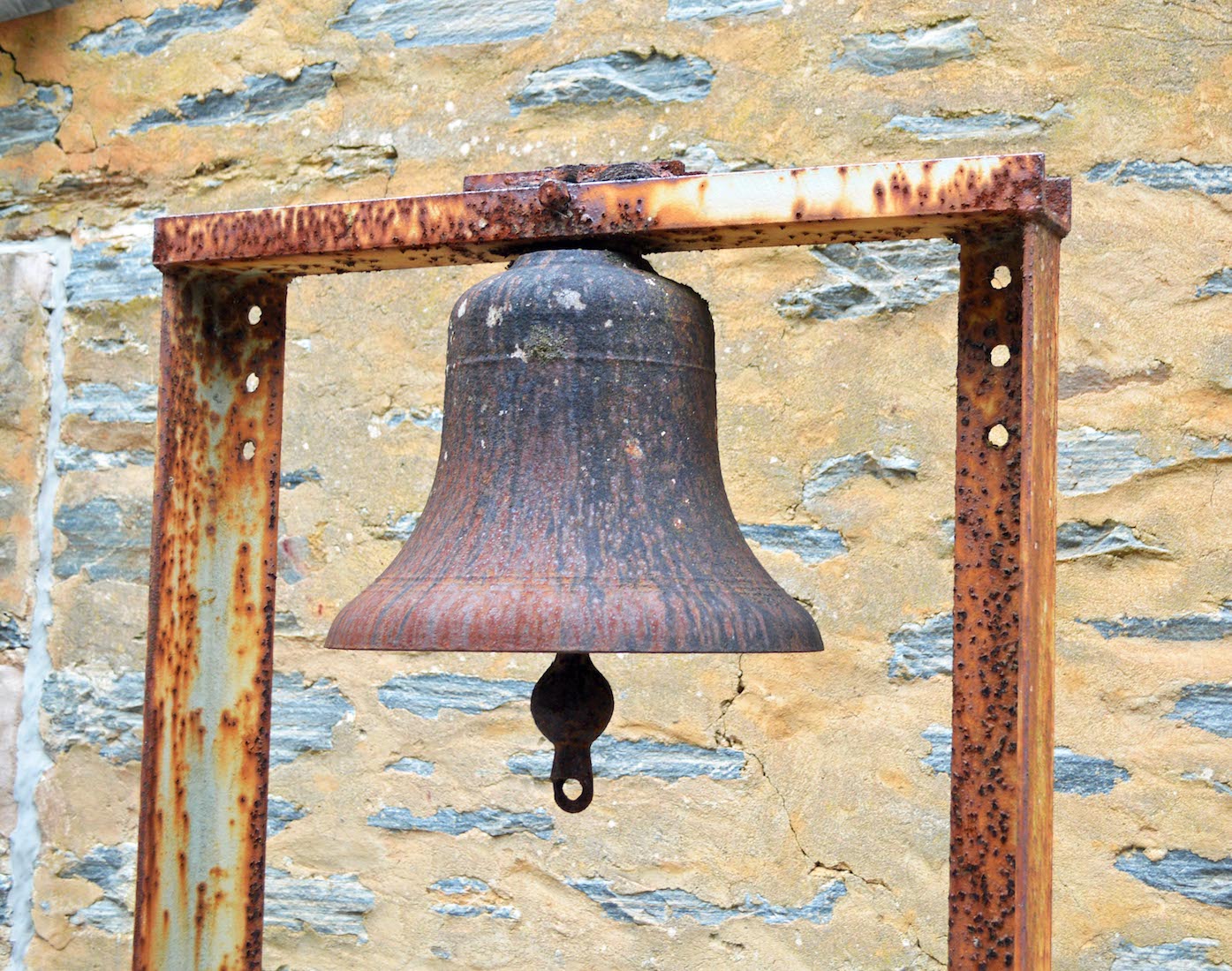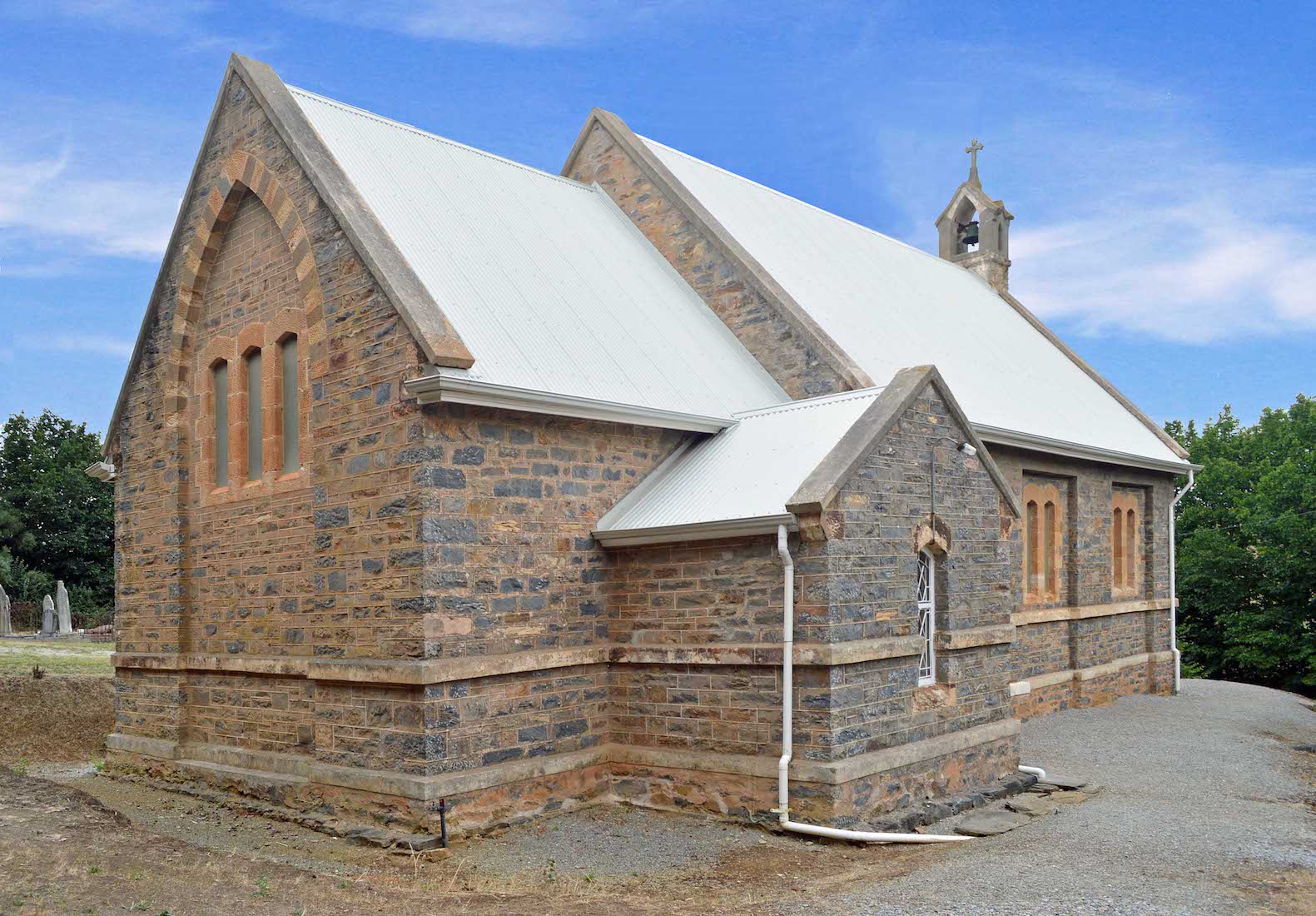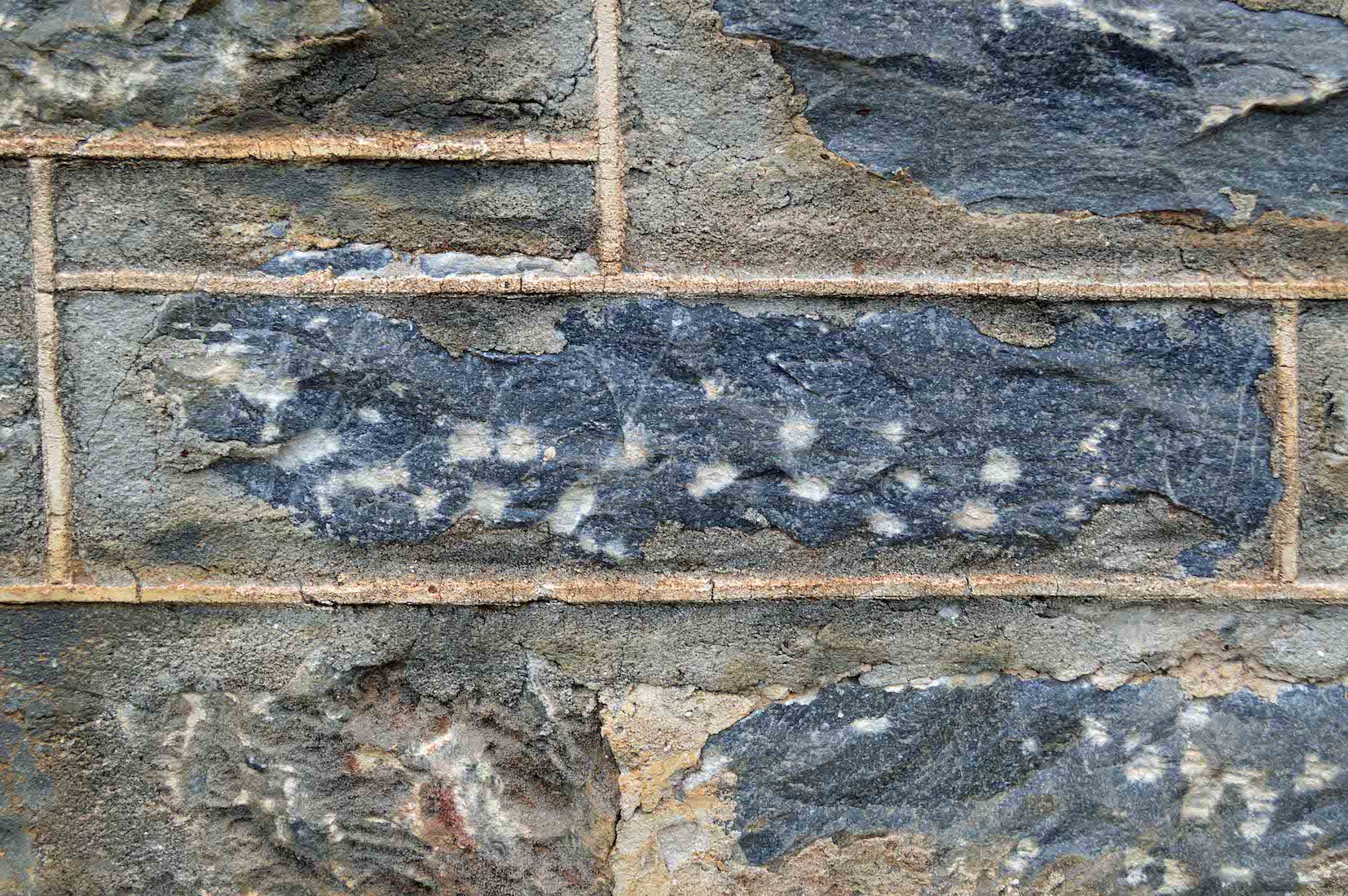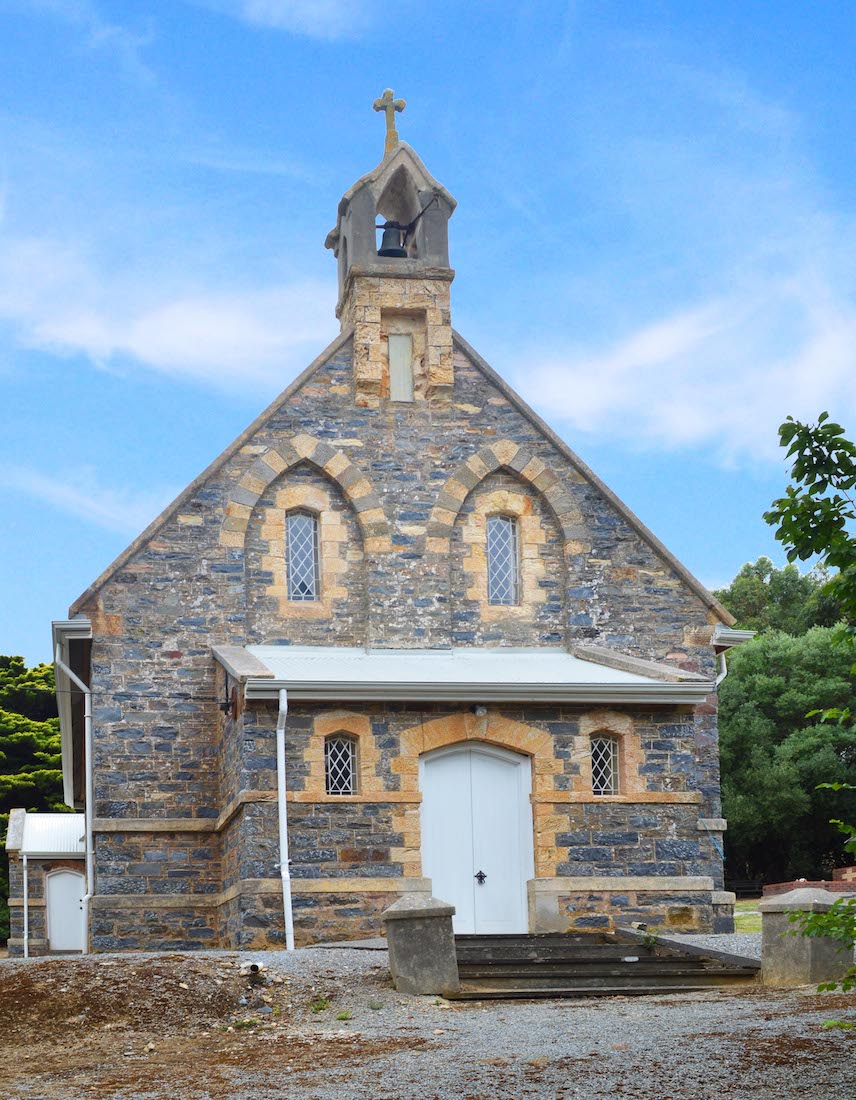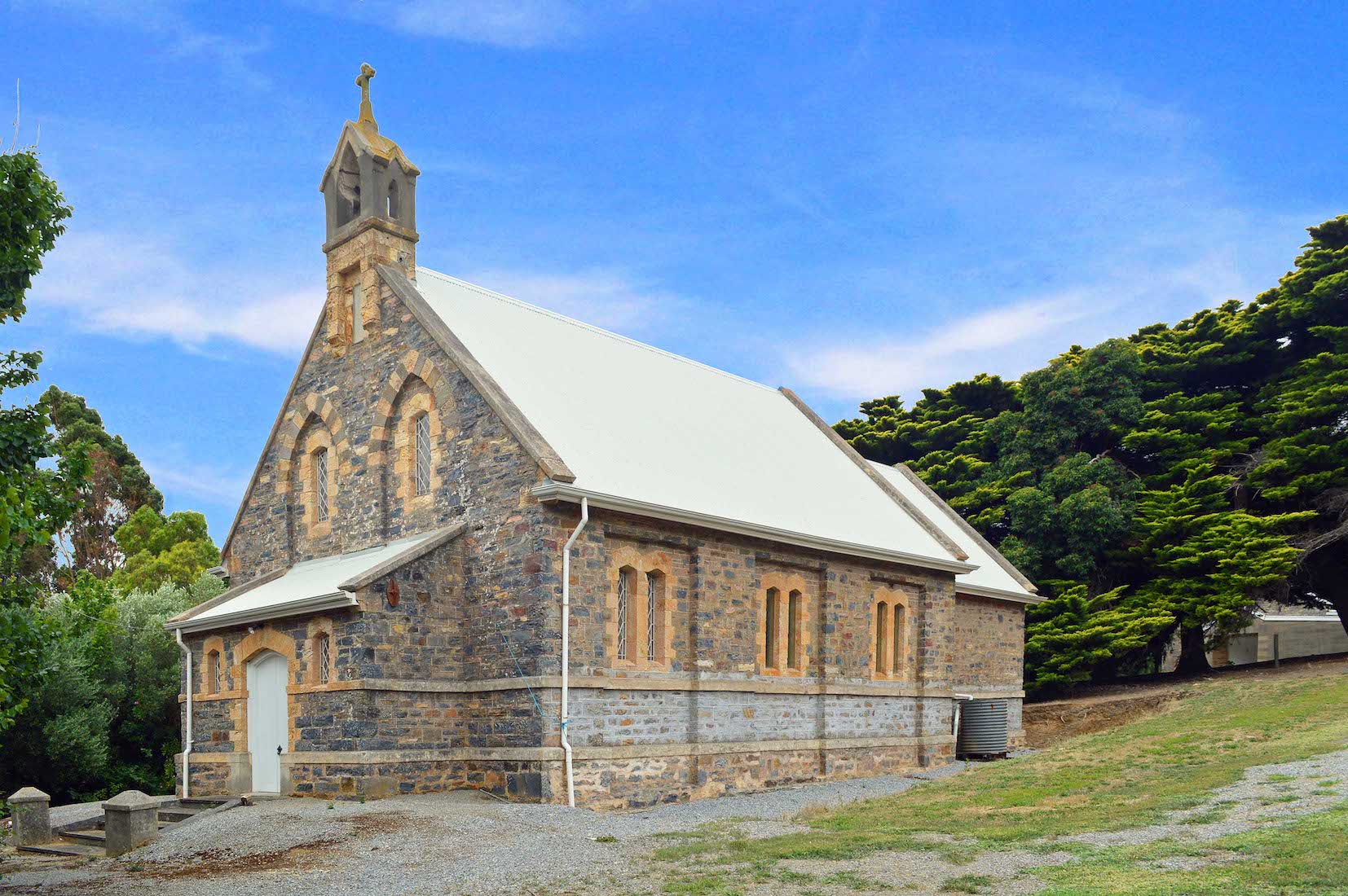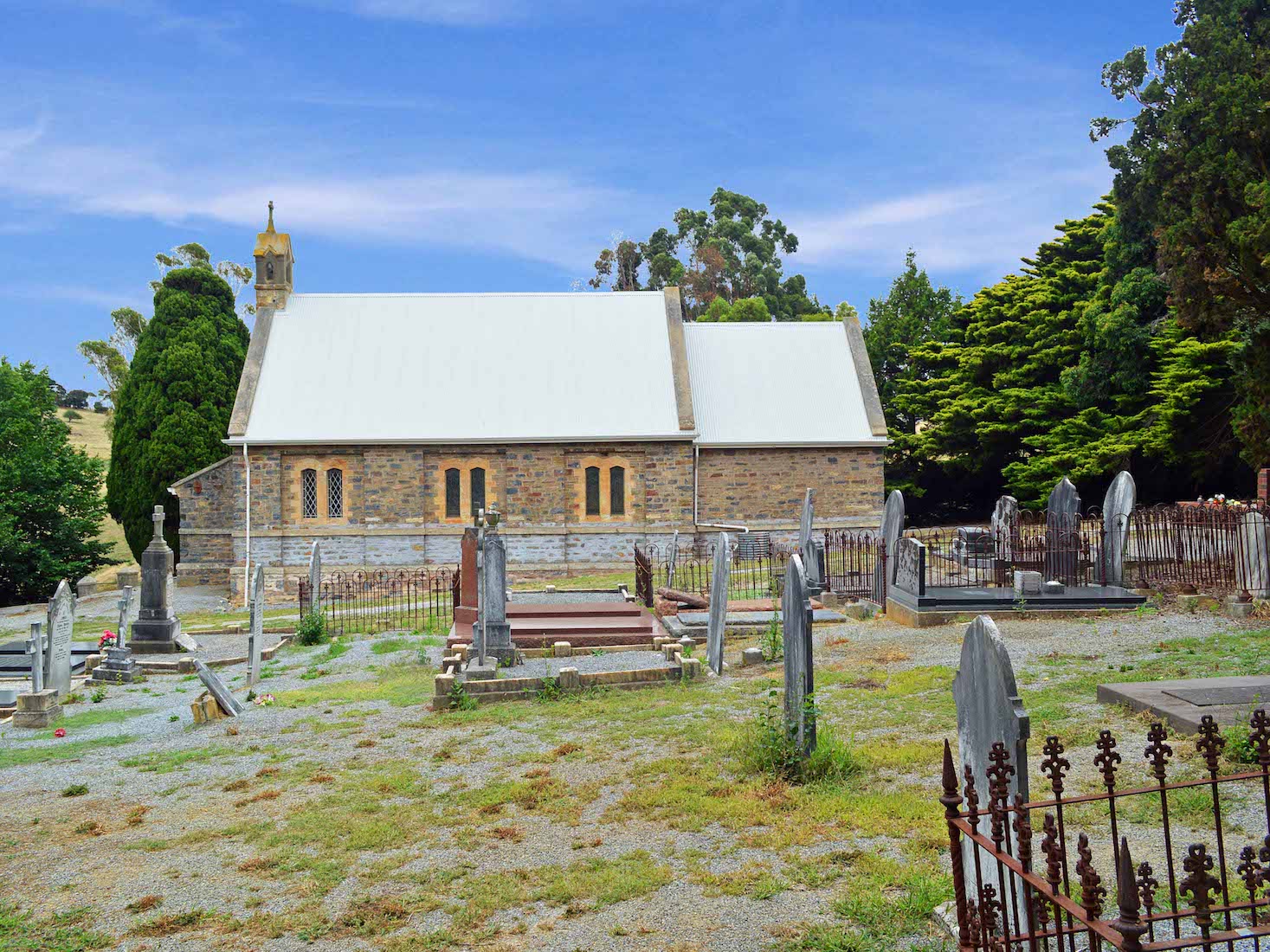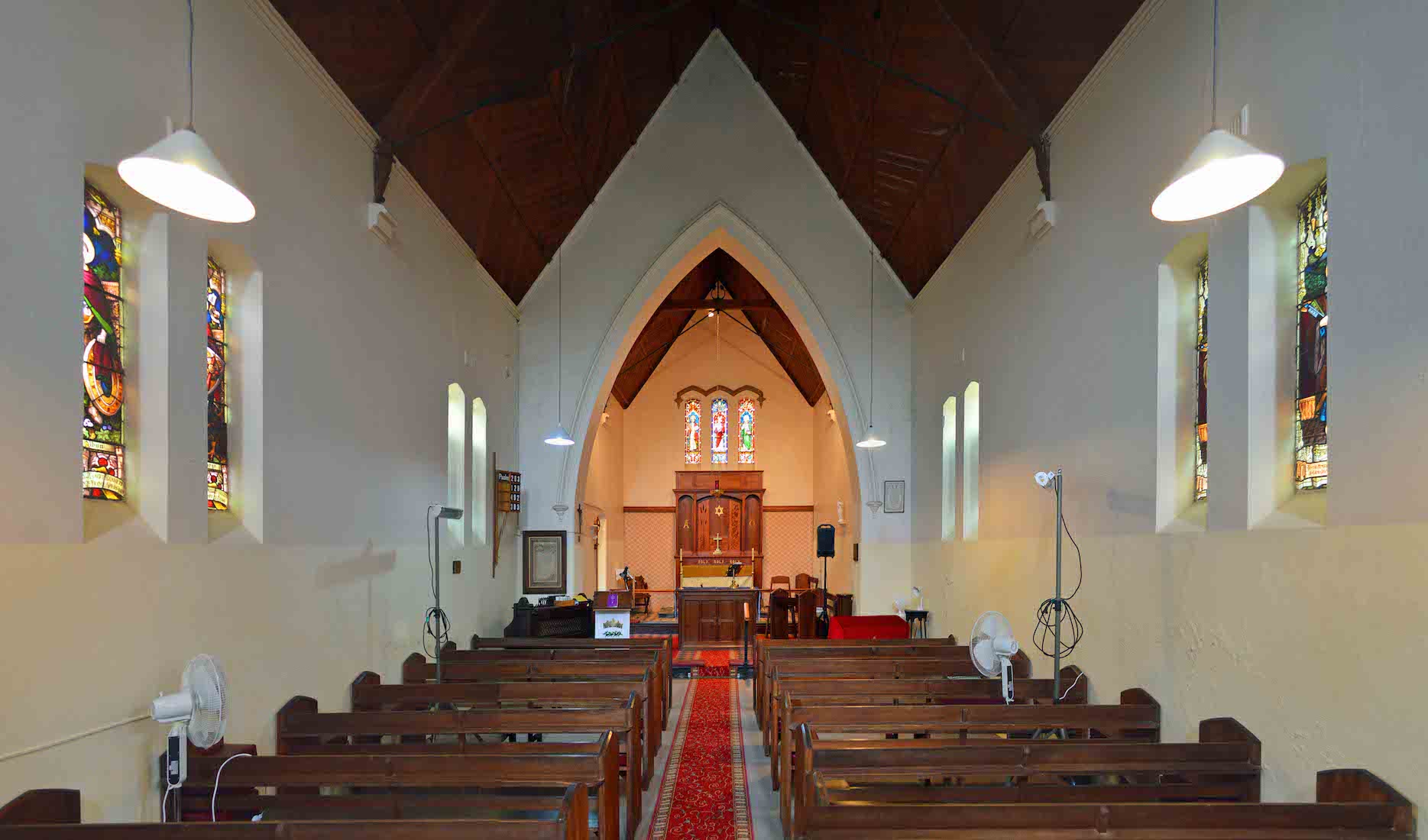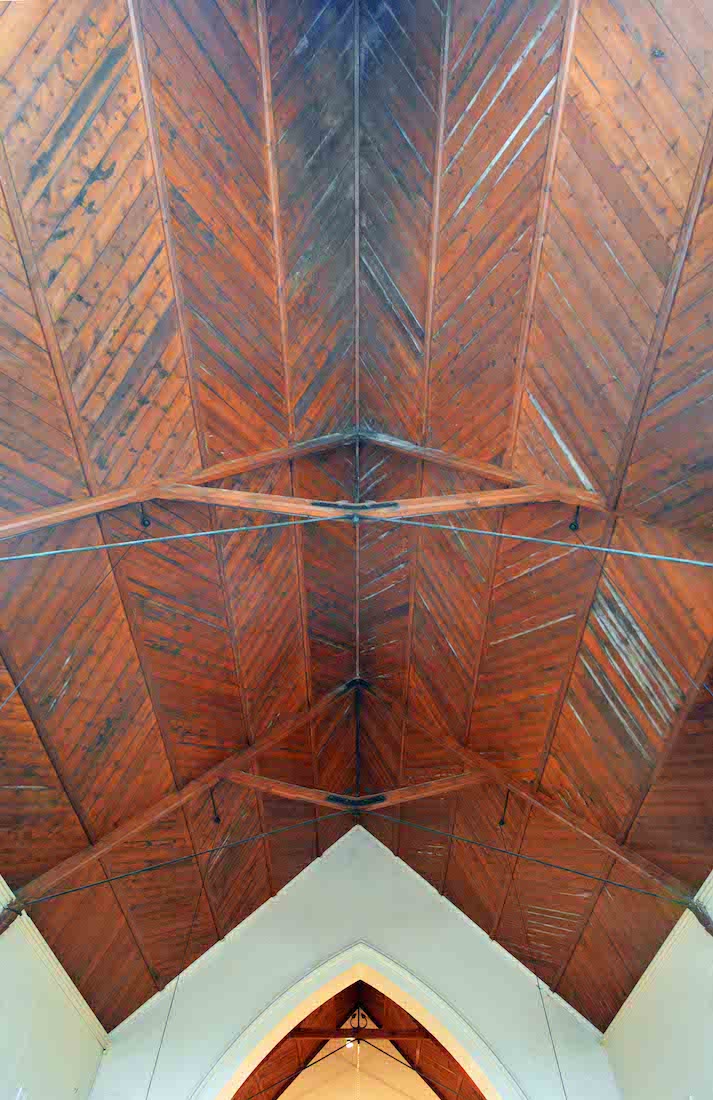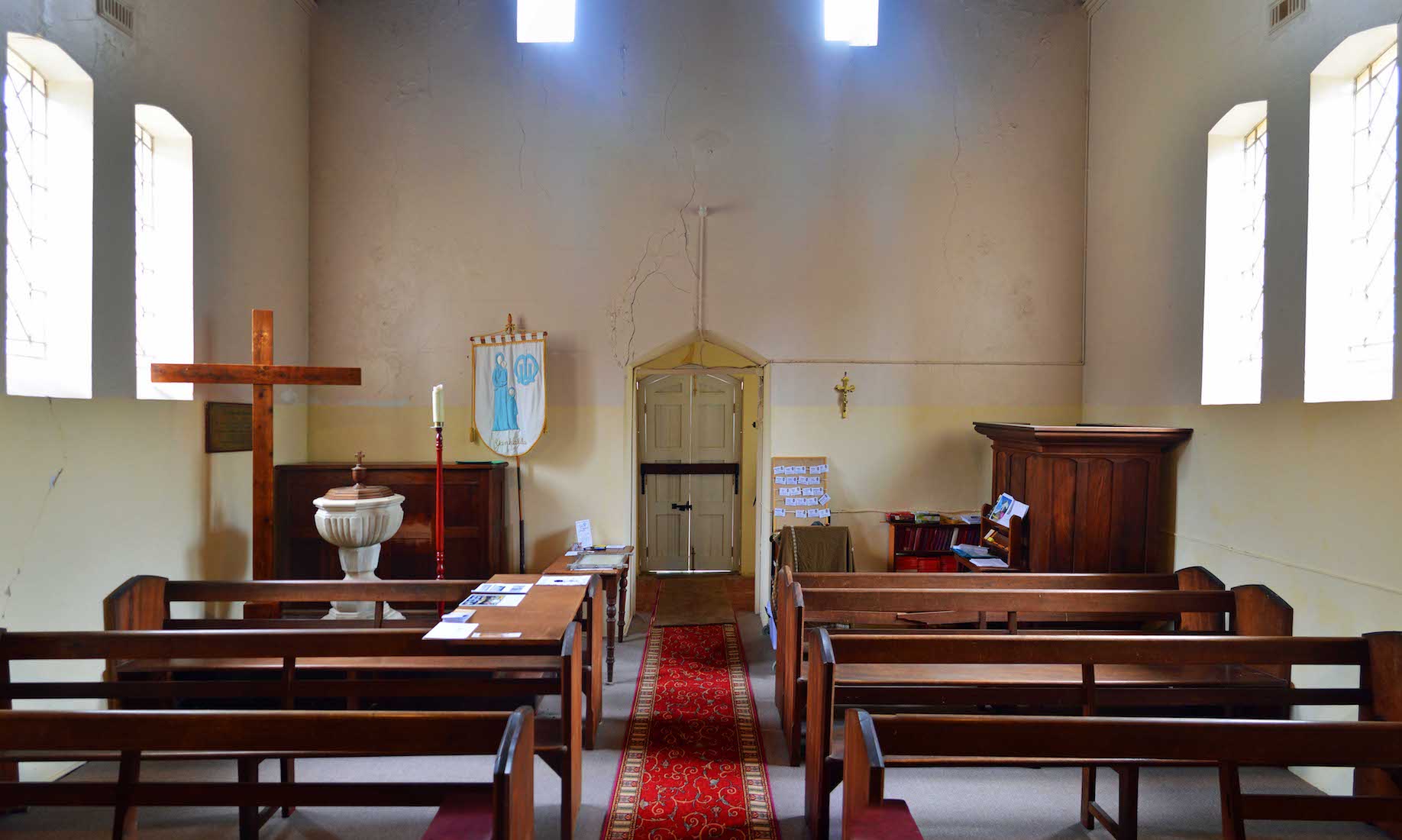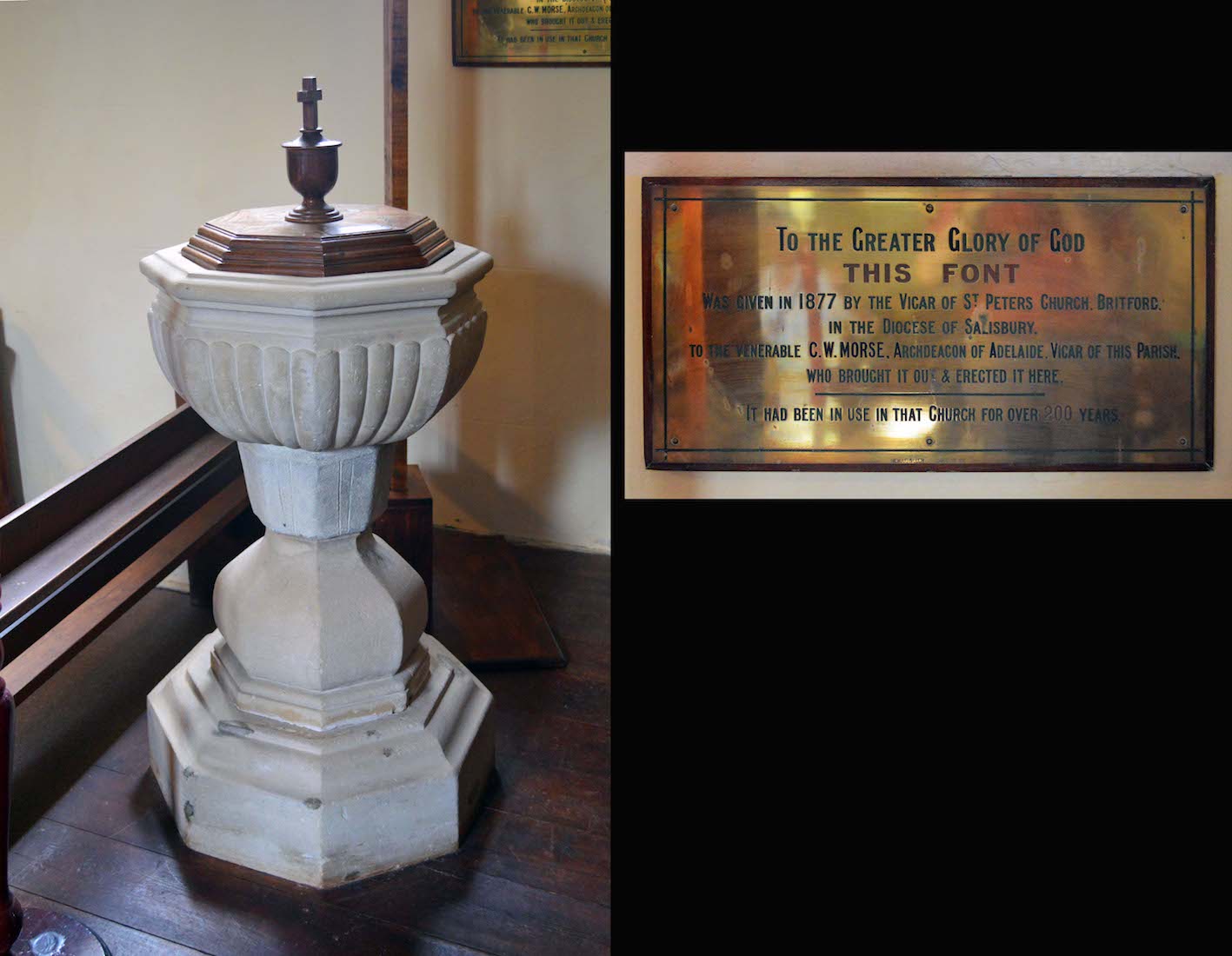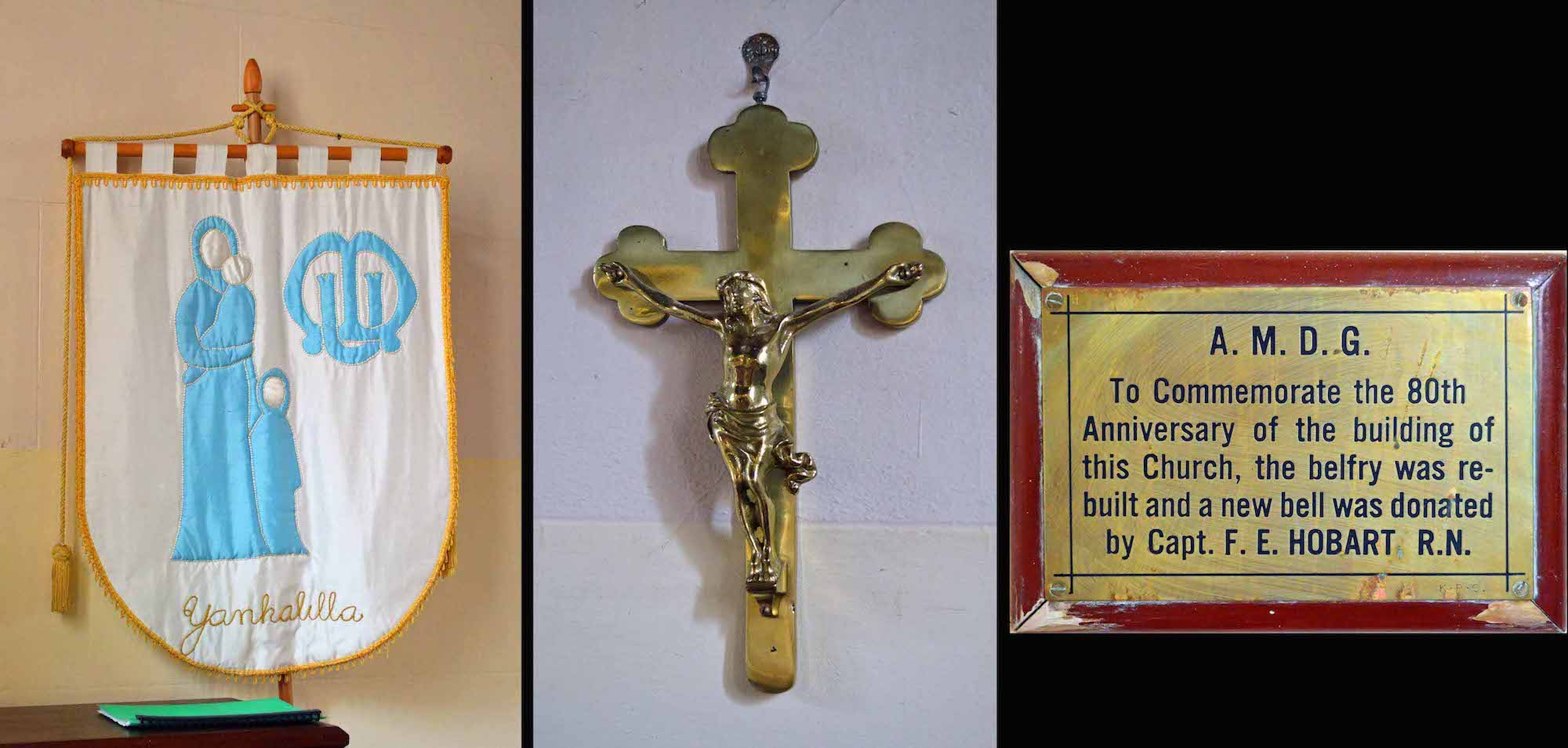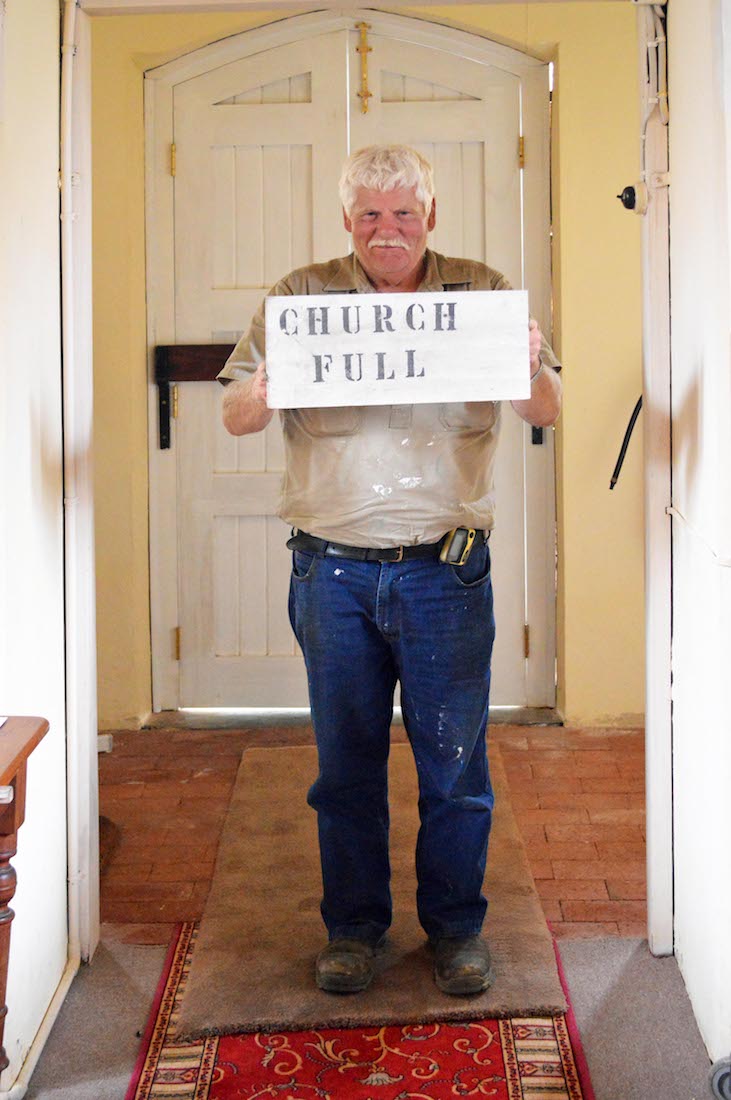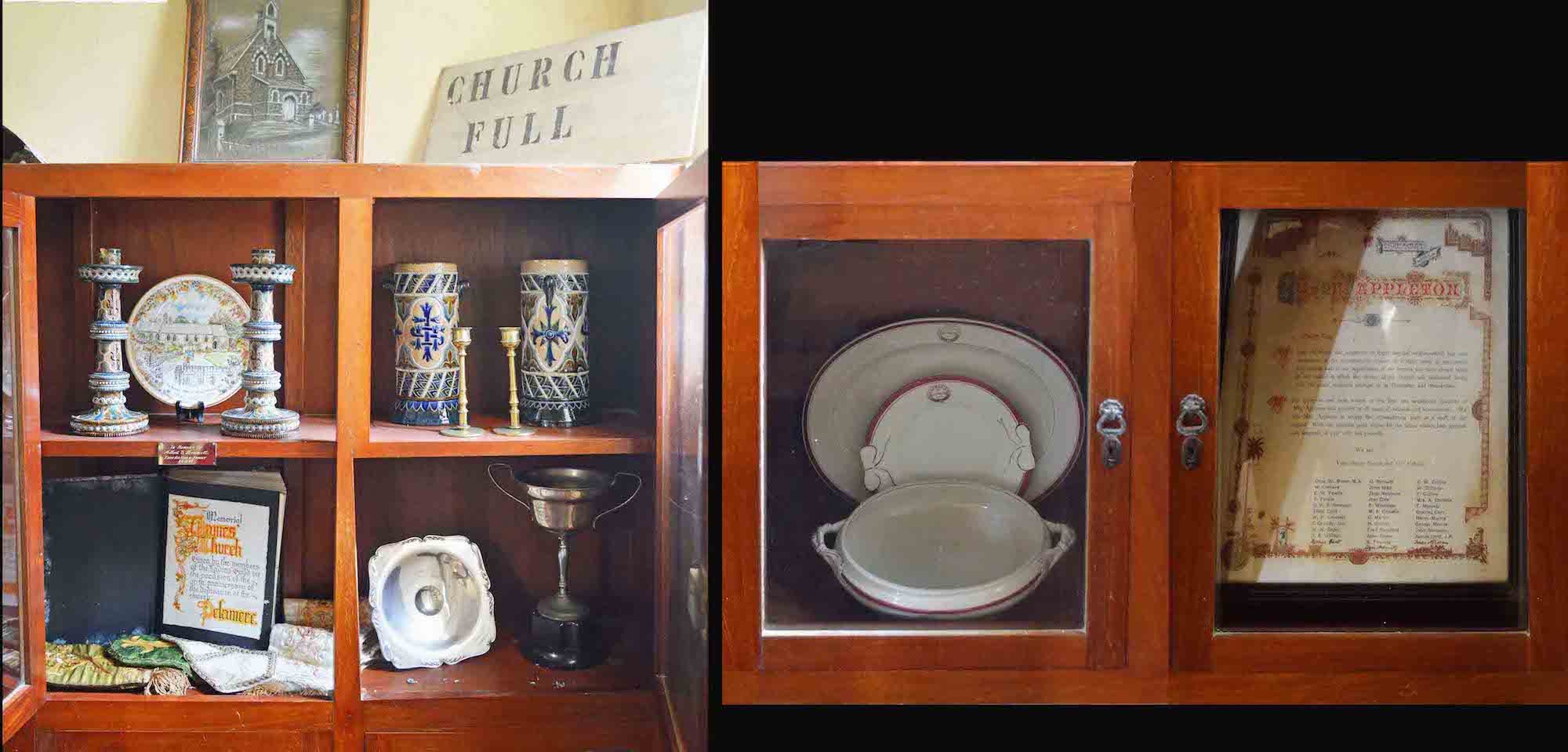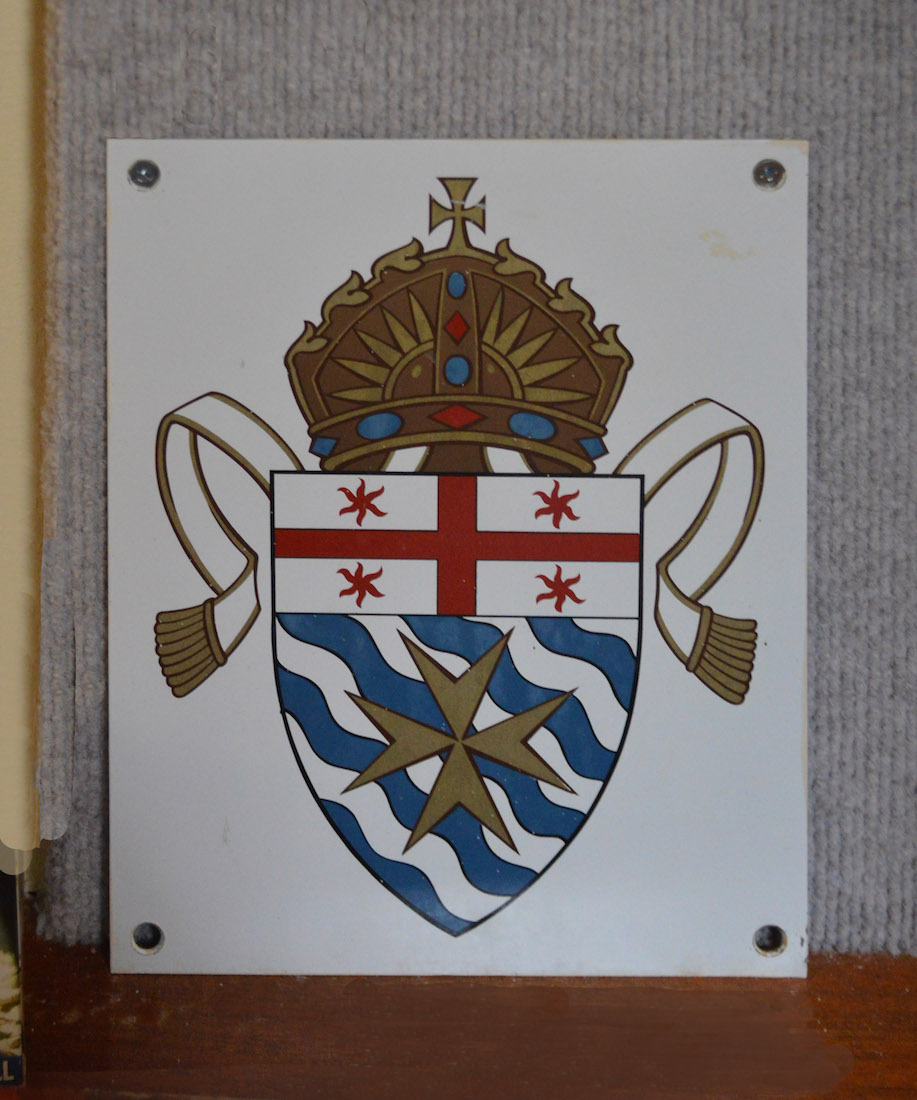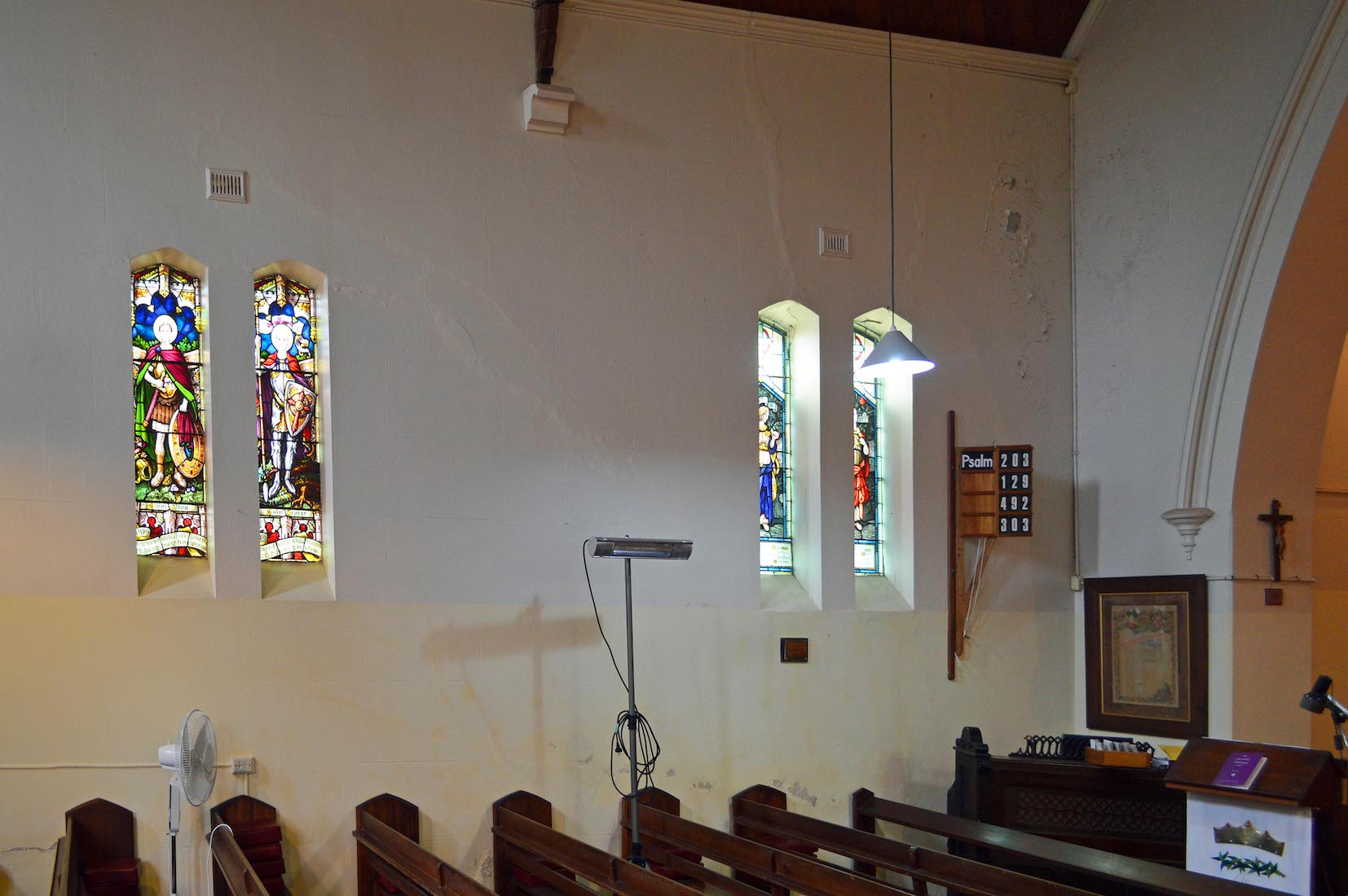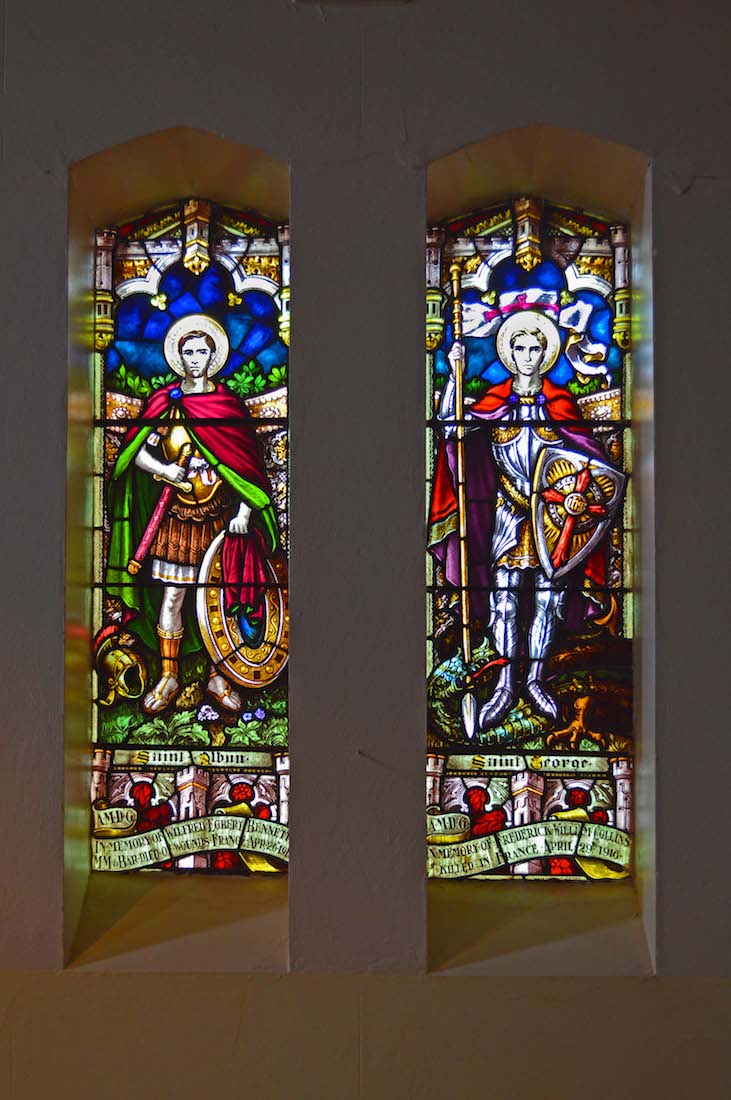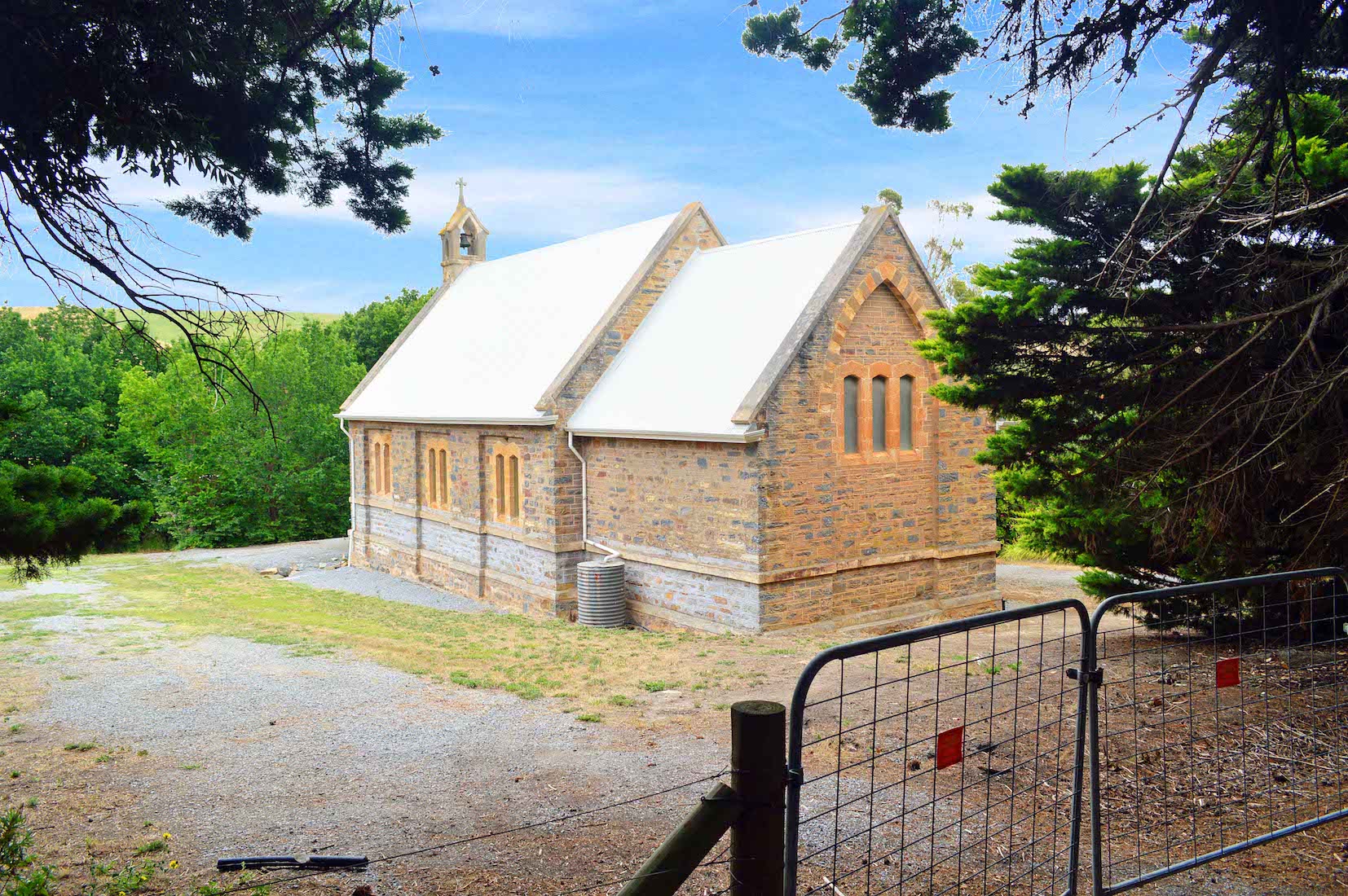
Originally the area around Delamere was known by the aboriginal name of “Etchacowinga” – the name of the local creek of that name. The name was then changed to “Stockyards” and later, to “Glenburn”. However the latter change caused some confusion with a place named Glenburnie in the Southeast of the State, and so the present name “Delamere” was chosen in 1876. In fact, Delamere is also a village in Chester, England. INDEX
2. SATELLITE VIEW
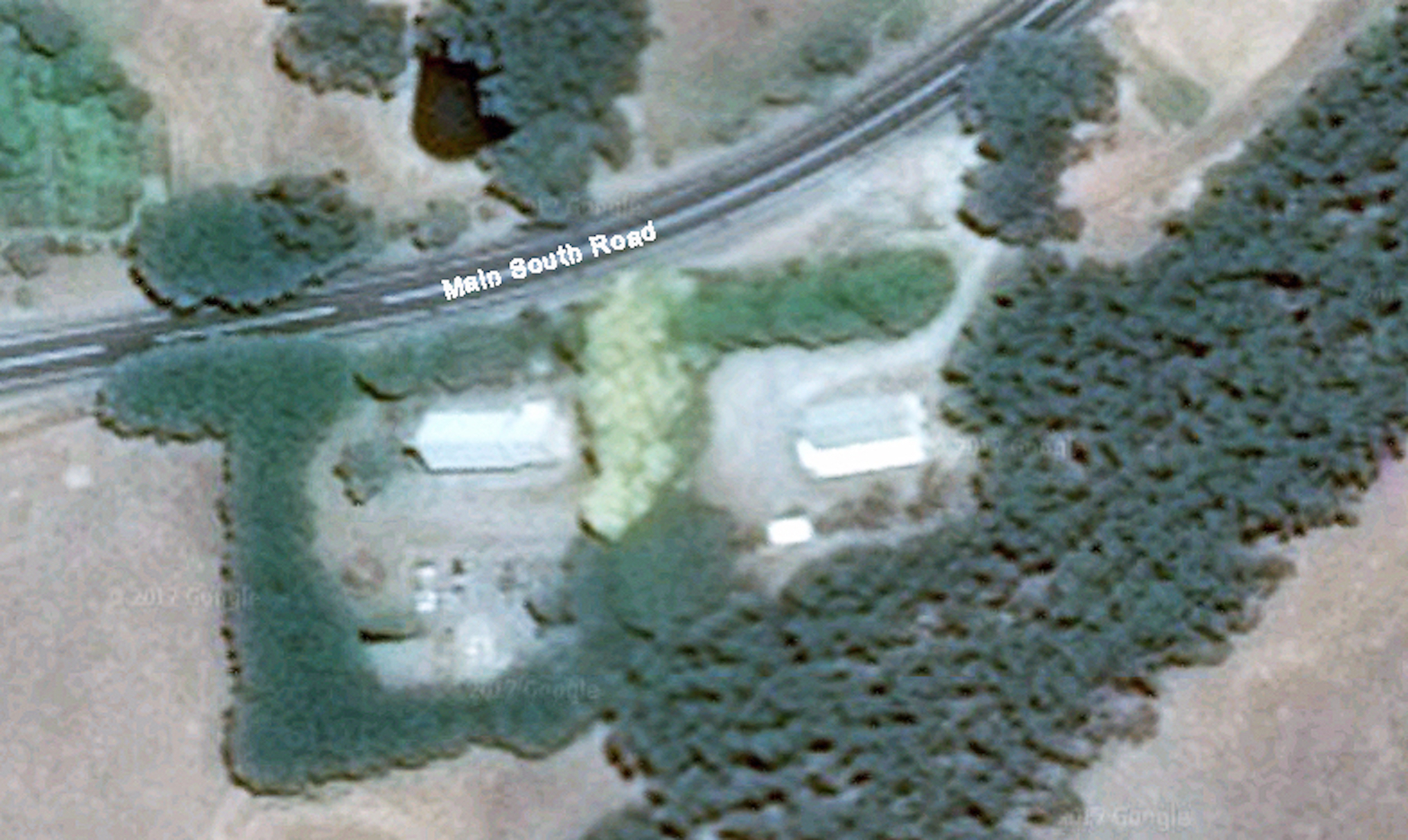
This view shows the Church at left, and the Church hall at right, both on Main South Road, just south of the Village store. Christ Church in nearby Yankalilla had opened in 1857, and beginning in 1860, regular services were conducted by the first incumbent of the Parish of Yankalilla, the Rev’d. Astley Cooper, in the home of William Randall who had lived at Second Valley Farm from 1851 and was one of the first lay readers licensed by Bishop Augustus Short.
3. CHURCH SIGN
James Cole was an agricultural labourer who had emigrated from Plymouth in England in 1849. In 1853 he married Ann Batt at Christ Church, North Adelaide after which the couple travelled the 15 day journey to Delamere in a bullock wagon. At a meeting in April 1870 it was resolved unanimously to build a church on half an acre of ground offered by Messrs Collins, James Cole and Joel Cole. A track up from the sign leads to the Church hall.
4. CHURCH HALL
The main room of the Hall was built of stone during 1898. For nearly 25 years St James’ Hall functioned as a community hall, being the only available venue for the district’s major social events. An alternative was provided with the opening in 1923 of the larger Second Valley Hall – a memorial to soldiers who fell in World War I. This venue was then used for the larger St James’ functions, such as the Annual Ball.
5. OLD BELL
The first Church bell was placed in position for the Church opening in 1871. It become cracked, but remained in the belfry until it was replaced by a new bell given by Captain Hobart RN and dedicated by the Archdeacon in 1953. A frame was made on which to hang the old bell for use as a Sunday School bell, and may be seen to this day.
6. NORTHEAST VIEW
From the hall, we descend a gentle slope through a gate to arrive at this view of the Church. Building of the Church began early in July, 1870. Technically, the Church is built on Lot 359 Section 1522 in the Hundred of Yankalilla, situated 200m west of the junction of Cole Road with Main South Road.
7. OLD STONE
The foundation stone of St James’ Church, unidentifiable today, was laid on 19th September 1870 by the Very Rev’d. Alexander Russell, Dean of Adelaide. The Church was dedicated by Bishop Short on Thursday, 4th May 1871. ‘The Register’ (8/5/1871), cites Rev’d Charles Morse: “This handsome church – which is not yet finished externally – consisting of nave and chancel with vestry, was designed by Mr W.F. Anderson .. . .”
8. WEST WALL
When the Church reached its Jubilee Year in 1921, the occasion was celebrated by a morning service at which the Bishop (Rt Rev’d A.N. Thomas) gave the address, followed by a dinner at 12.30pm, sports in the afternoon and an evening social event.
9. SOUTHWEST VIEW
The Bishop attended St James’ again for the 60th Anniversary Festival in 1931. The morning service was followed by a “sumptuous dinner”, a program of sports in the afternoon, a “splendid tea”, and a concert in the evening.
10. ACROSS THE CEMETERY
Land for the cemetery was also given by James Cole, and he was the first to be buried there in 1872. Two years later his widow, Ann, became the second wife of John Cook who had been appointed as the first Curator of the Cemetery in 1871. He (and presumably Ann) moved to Yorke Peninsular in 1875. Ann, however, must have returned to Delamere to live because in 1925 she reached her 100th birthday which was celebrated by a party in St James’ Hall. She died two years later.
11. NAVE
We now enter the Church and stand at the rear of the nave. The body of the Church has a rectangular shape with a simple gable roof. A graceful Gothic arch frames the sanctuary. There are four stained glass windows in pairs along each nave wall, and three small windows above the reredos. The whole decor is very simple.
12. NAVE ROOF
A contemporary report of the day of dedication of the church tells us that the ceiling is of stained deal boards laid diagonally up to the ridge; this and the fittings of solid cedar, were the work of Klopp & Roads of Yankalilla.
13. WEST NAVE
The rear of the nave is rather cluttered. We observe: a large wooden cross, font, Paschal candle, banner, small crucifix, and old pulpit. The pulpit was dedicated by Bishop Thomas on 8th July 1925. In 2000, after having remained unused for many years the pulpit was moved to the rear of the nave to make way for a second small organ.
14. FONT
Believed to date back some 900 years to Saxon times, the font was given to St James’ by Canon Morres, the Vicar of St Peter’s, Britford, in the Diocese of Salisbury, England. The font cover bears a small plaque inscribed: ‘AMDG The gift of Capt. John E. Webb and his wife, Winifred M. Webb • the Diocese of Salisbury England • 4th May 1985.’
15. WEST NAVE ITEMS
At left is a Mothers’ Union banner with the name ‘Yankalilla’. The small gold crucifix is a “Gospel Cross”, which priests could look on to remind them to preach about Christ crucified. It bears on the reverse an inscription: AMDG A gift to St James Church Delamere from Lloyd A. Mink Dedicated 20th May 1984. The plaque in the foyer reads: ‘A.M.D.G. • To commemorate the 80th Anniversary of the building of this Church, the belfry was rebuilt and a new bell was donated by Capt. F. E. Hobart R.N.’
16. CHURCH FULL
These days, St James’ Church has a small congregation. This sign, held by Warden Peter Filsell was either created a long time ago, or by a parishioner with great faith!
17. CHURCH TREASURES
A small cabinet in the porch contains Royal Doulton vases and candlesticks. These were presented to the Church by Bishop Morehouse of Melbourne, and brought by Miss Short, the daughter of Bishop Augustus Short who accompanied her father at the 1871 Dedication Service. There is some history here!
18. DIOCESAN LOGO
In the back porch I found this coat of arms for the Diocese of the Murray, granted to the Synod of the Diocese by the Royal College of Arms on 29 March 1982. The top bears the red cross and the four stars of the Arms of the Diocese of Adelaide. This is the cross of St George, and the ’Crux Australis’. The bottom depicts the waves and sand bars of the River Murray. The Maltese Cross (or the cross of St John the Baptist) signifies the patron Saint of the Cathedral Church.
19. NORTH NAVE WALL
Back in the nave we observe the North wall with its two pairs of stained glass windows. At the base of the arch framing the sanctuary is a framed picture.
20. SAINTS ALBAN AND GEORGE WINDOWS
The pair of windows at left depict St Alban and St George. These windows were made by William Montgomery and placed in memory of Wilfred Egbert Bennett and Frederick William Collins, both of whom were baptised and confirmed in the church and who were killed in France during the war of 1914-1918. Alban and George were both English saints, and St Alban was the first English martyr.


